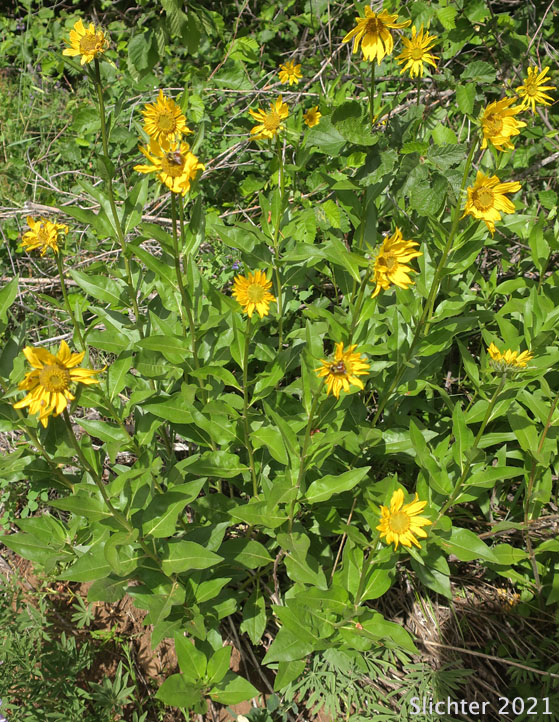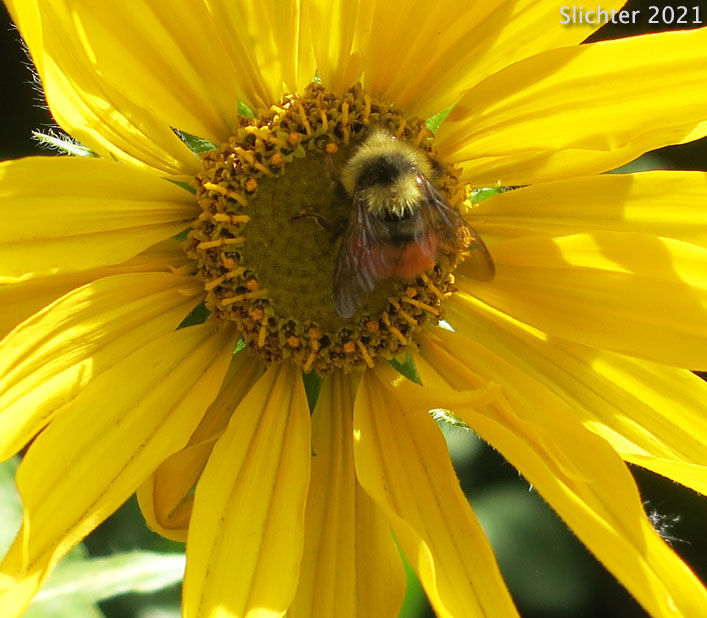 -
- 
Characteristics:
Little sunflower, also known as false sunflower, is an attractive perennial wildflower suitable for the woodland or shrubland garden, especially in drier climates. The one to several stems arise from 20-100 cm high from a woody base. The herbage is variable, consisting either of many minute hairs, many longer, stiff and spreading hairs, or occasionally lacking hairs. The lowest 1-2 pairs of leaves are opposite, while the upper ones are alternate. The leaves are rough to the touch with 3 nerves or main veins in the blade. They range up to 15 cm long and up to 5 cm wide and are lanceolate to elliptical in shape. The lower leaves are more oblanceolate and smaller than the upper leaves.
The flower heads are usually solitary with the yellowish central disk 1.5-3 cm wide. The 13-21 rays are yellow and measure 2-4.5 cm long. The leafy involucral bracts are lance-linear in shape with rounded to pointed tips. They are covered with rough hairs.
Little sunflower is found in open woods and brushy areas at moderate elevations.
Little sunflower may be found east of the Cascade Mountain crest, from British Columbia, south through Washington to Oregon and east to Montana, Nevada and New Mexico.